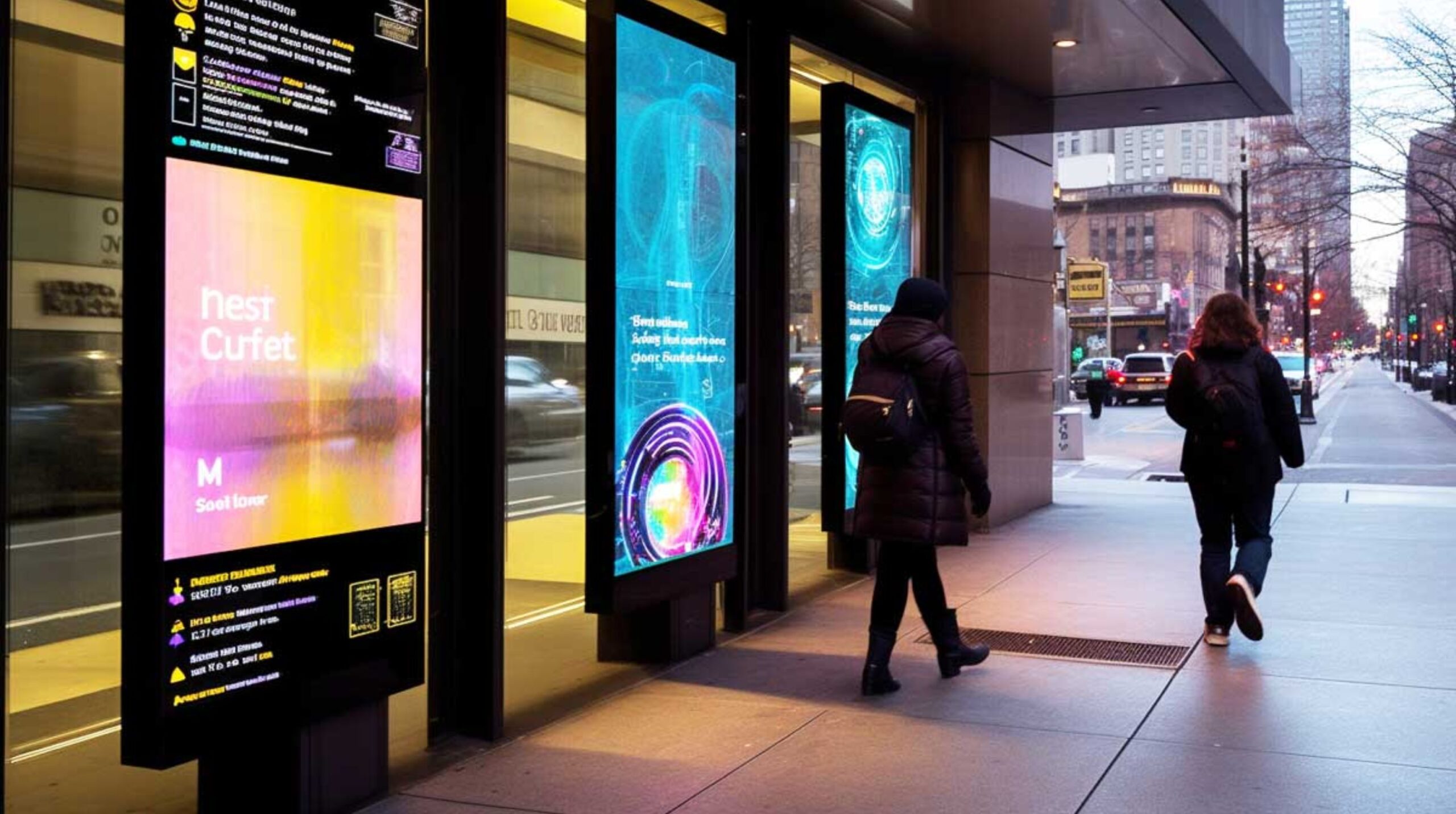
05 May Future of Digital Signage: Innovations Transforming Displays in 2025
Digital signage boards have moved beyond static images through continuous advancements toward interactive platforms with intelligence capabilities. Modern signage enables businesses through AR and VR innovation with AI processing and data analytics to implement advertising functions beyond static displays for delivering immersive interactions with customers. Digital signage technology exhibits transformative potential during 2025 which will reconstruct marketing approaches and enhance retail sales and transform customer interactions in new directions.
The Evolution of Digital Signage
LED displays evolved with time to become today’s networked cloud-controlled signage systems. Signage intelligence increased dramatically due to the combination of IoT technology and real-time content management and remote administrative capabilities. The digital signage market is predicted to achieve $27.8 billion by 2026 according to MarketsandMarkets because business communication increasingly relies on it.
Top Digital Signage Trends for 2025
AR & VR Integration
AR along with VR technologies provide interactive capabilities that make signage more appealing to audiences. Stores implement AR-powered display glasses for people to test products digitally and real estate companies use VR terminals that deliver complete virtual property inspections. Customers get a superior experience because this technology unites virtual elements with actual products.
Hyper-Personalized Content
AI personalization techniques transform how companies distribute content because of their ability to create personalized delivery methods. Real-time targeting is now possible through digital signage because it utilizes audience demographic information and audience behavior with audience preferences. The combination of facial recognition technology and data analysis tools enables personalized communications which generates better outcomes because the content becomes more relevant.
Touchless & Voice-Controlled Displays
Contactless interfaces gained greater importance during the spread of the pandemic. Technology enables visitors to use touchless systems for improved health safety while enjoying better accessibility. The systems use combination sensors with voice assistants and gesture recognition elements to present information easily to users.
Programmatic DOOH Advertising
Through Programmatic Digital Out-of-Home (DOOH) advertising users can process bids in real-time for automatic advertisement placement. Through this method brands achieve flexibility as well as accurate targeting and they can measure their return on investment. Urban locations along with transportation centers drive an increasing adoption of this trend.
Sustainability in Digital Signage
The development of energy-saving LED and e-ink displays was fueled by eco-friendly innovations. The Carbon footprint is further reduced by the use of solar powered units and remote content management. There is also a possibility of using recycled plastics for the signage enclosures.
Signs now have the capability to collect data from user interactions and optimize the content accordingly. Analytics like heat map analysis and Dwell-time analytics measure the amount of time an audience spends engaging with content and provides marketers deep insights into audience engagement. Marketers can A/B test variations of content for better results.
AI & Chatbot Integration in Kiosks
Customer service is being revolutionized by AI kiosks. Chatbots that are integrated into these kiosks attend to routine inquiries, bookings and support 24 hours a day. Such kiosks are mostly applicable in transportation, hospitality and retail.
Industry Applications & Future Use Cases
Digital signage has many applications in business including.
Retail: virtual fitting rooms and promotions aimed at loyal customers
Healthcare: real-time updates and assistance in multiple languages
Education: interactive boards for teaching students
Transportation: Live updates on the routes and emergency notifications
Hospitality: Self- Check ins and catalogs for events. Holographic signage that responds biometriaclly, and AI tailored content feeds are among the many innovations that are still to come.
Future Issues
Even with a guarantee, there is difficulty with the implementation of digital signage. There are growing issues with recognizing faces and data privacy regarding digital signage. Reduced attention spans alongside overexposure to content continuously require new ideas. Achieving new ideas poses challenges for the high costs associated with implementing AR or VR systems.
Final Note
There are new digital signage solutions that will be intelligent, interactive, and captivating. In 2025 and onwards businesses still need to consider the competition and implement AR/VR along with hyper-personalization. This hyper-focus on targeting individuals and caring for the environment as critical to becoming sustainable will be key. The use of advanced signage technology is an investment that businesses should adopt now to shift their focus to tomorrow’s audiences.

No Comments